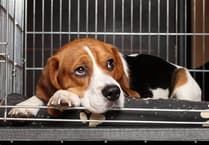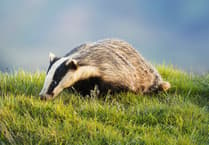Caring for an elderly pet is a special time when owners can give something back to their faithful friends.
In the case of dogs, active walks become leisurely ‘smell strolls’ and, as with elderly cats, they need a quiet environment where they can spend more time sleeping.
Older pets are more vulnerable to illness, injury and sensory issues – loss of hearing and eye-sight exacerbating the latter.
Toilet habits may become a bit ‘messy’ and matted fur could become a problem, and so an owner may need to give greater consideration to grooming.
If this is done properly, without physical or emotional distress, it can help owners maintain a bond with their beloved pet.
With cats, little and often is the way to approach grooming. An owner should make time every day for a light brush, concentrating on the areas that an old cat struggles to reach with their tongue – along the spine, for example.
Some breeds of dog will be used to visiting a groomer regularly and not find the experience too stressful.
But as they get older some dogs may become easily disorientated, more sensitive to touch, and generally just a bit grumpy, and so trips to the groomer could become an ordeal.
A professional groomer will understand the needs of an elderly dog, and adapt their approach accordingly; and they may be able to spot sights of illness in a dog before the owner does – lumps and bumps, or skin conditions, for example.
The qualities of a good groomer include: grooming one dog at a time; using minimal restraint; allowing the dog freedom to sit, stand and lie down; splitting grooming appointments into shorter, more frequent sessions if necessary; and allowing the owner to be present.
This latter quality may be something a very nervous younger dog, or a stressed older dog, may need. An owner’s presence is usually the most effective way to put a dog at ease, but an owner needs to ensure that they don’t become a hindrance.
They should follow the groomer’s instructions on where to stand and where to place their hands (groomers work with very sharp scissors!); apply a supportive restraint rather than a strangle hold on their dog; accept that their dog’s comfort is the primary goal, not a perfect haircut; and stay calm at all times.
Grooming is not simply done for cosmetic purposes.
Matted hair can pull at a dog or cat’s skin and even start to tear it, causing extreme discomfort.
Teddy, an elderly golden retriever, came to us two months ago and he is still recovering from the bruises caused by his badly matted coat. Despite his health issues he’s about to go out on trial with a new family, whereas four-year-old bearded collie Rhubarb is still looking for her next home.
Rhubarb is very sensitive, like most collies, and we think she’s had a bad experience with a groomer in the past. She needs assistance with her long coat and so her new owner will need to work closely with a trusted groomer to overcome her anxieties on a gradual basis, or be skilled enough to trim and brush her regularly at home.
Rhubarb is a typical ‘beardie’ in that she is intelligent and playful, affectionate, extremely energetic and she doesn’t like cars.
She also doesn’t particularly like young children but she is sociable and enjoys the company of other dogs and has previously lived with canine companions. She could probably also live with a confident cat who doesn’t run away from her, but this would need to be tested.
Rhubarb has done some agility training and she is responsive to commands, but she’s equally happy with less structured activities such as chasing balls and playing tag.
She won’t be with us for long, and so if you would like to meet her please complete a home finder questionnaire which you can now do online via our new website – www.manxspca.com.




